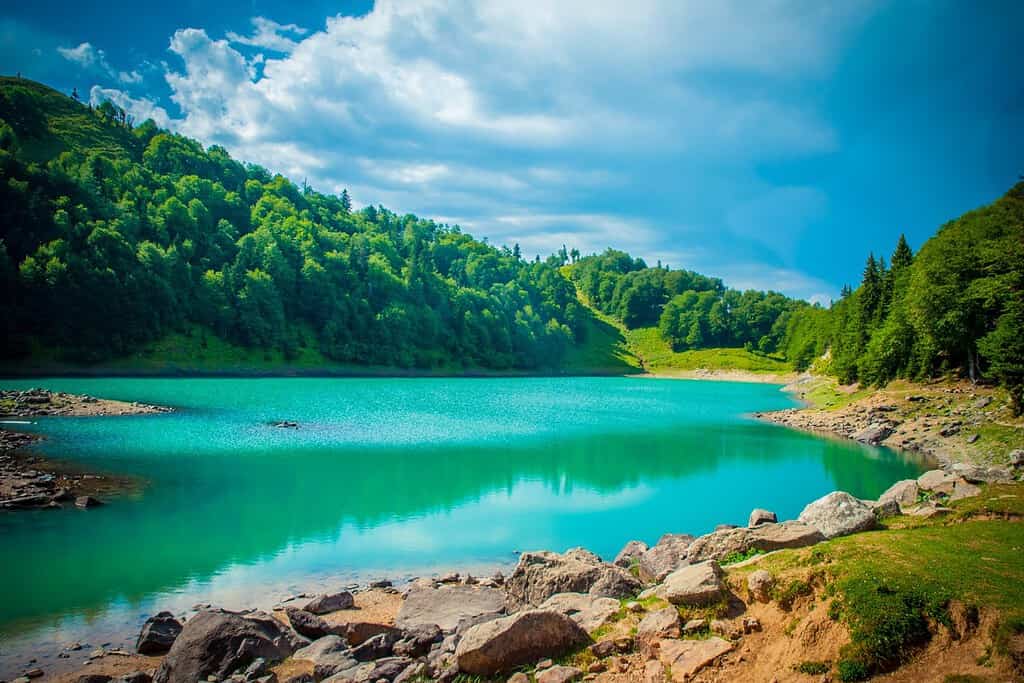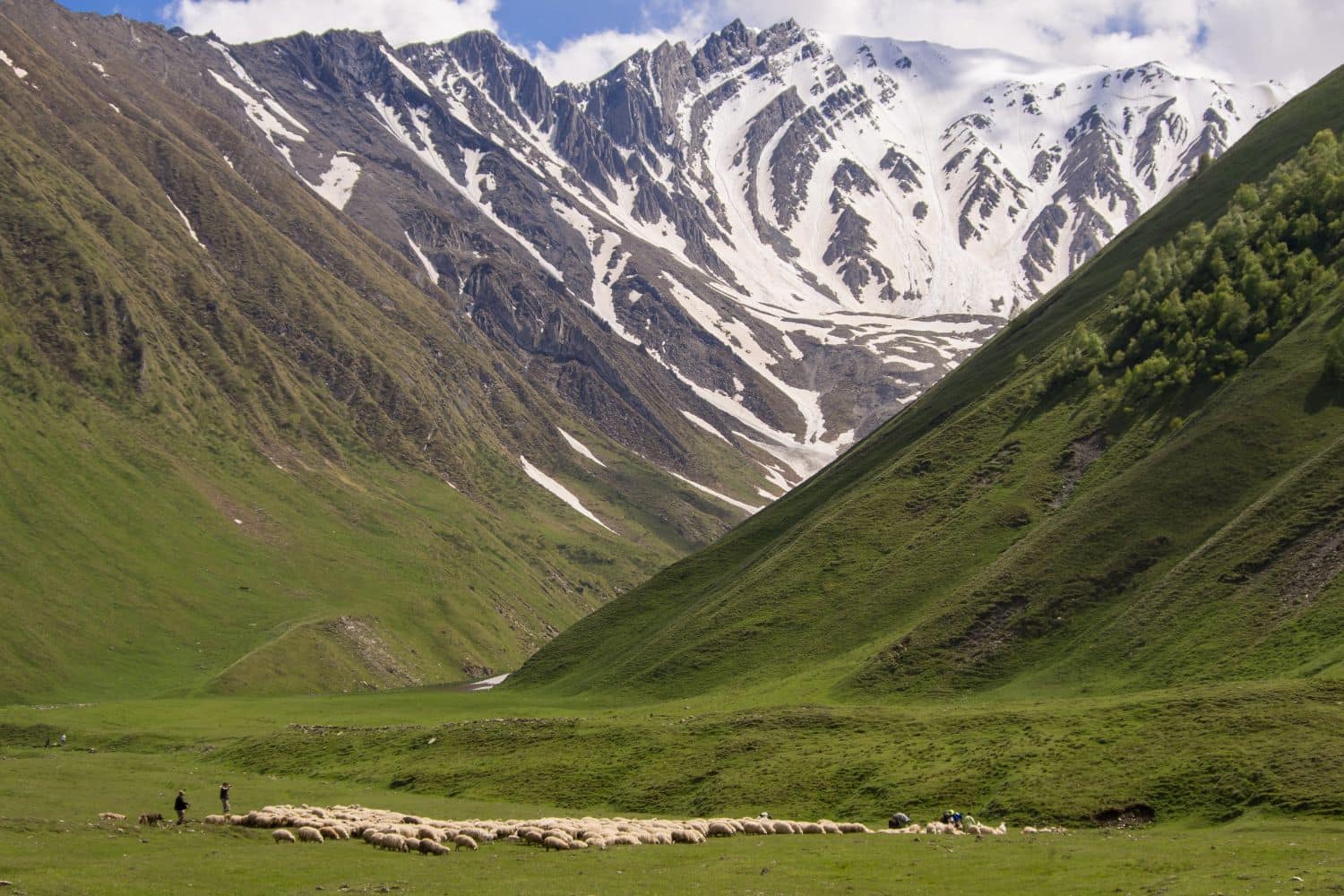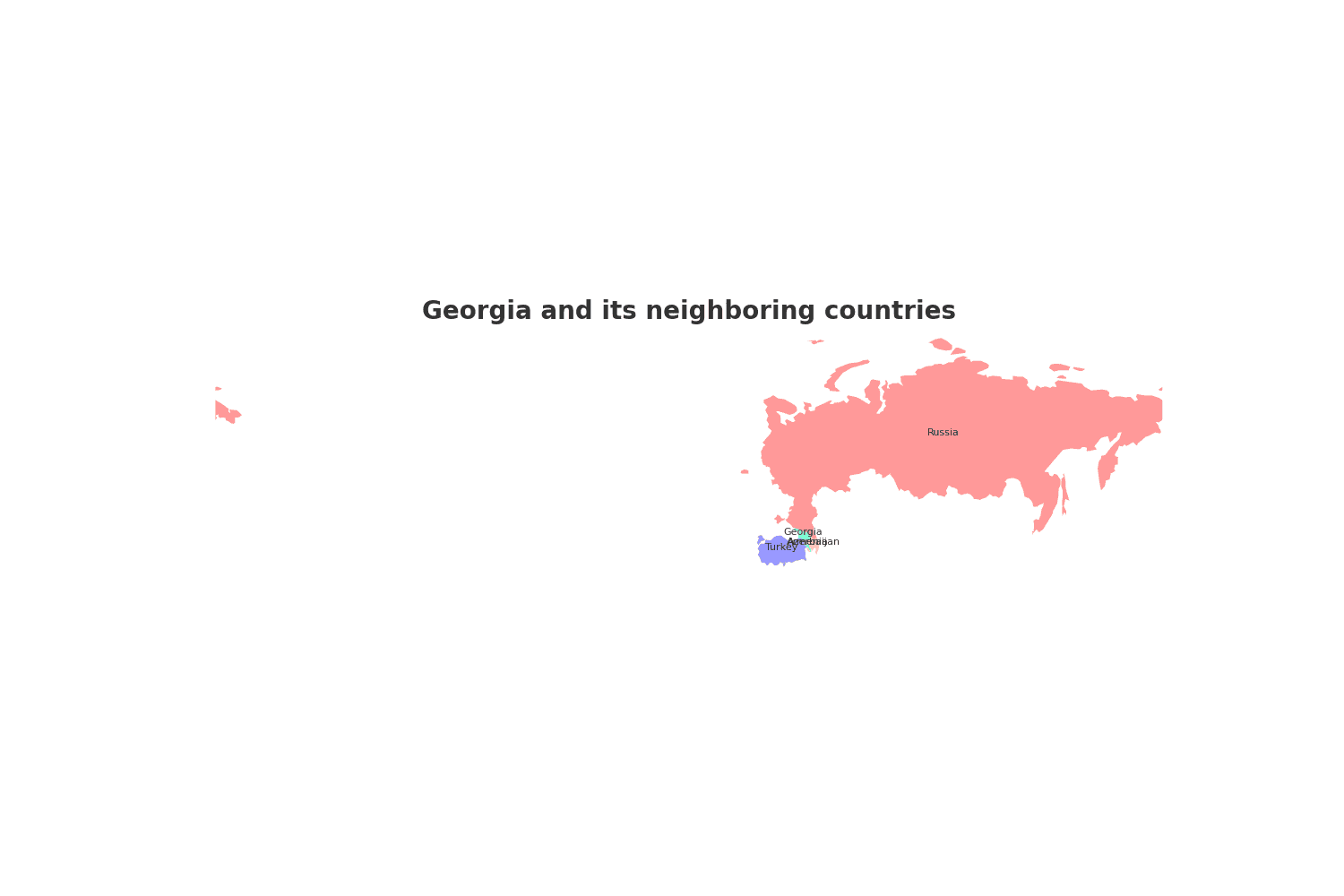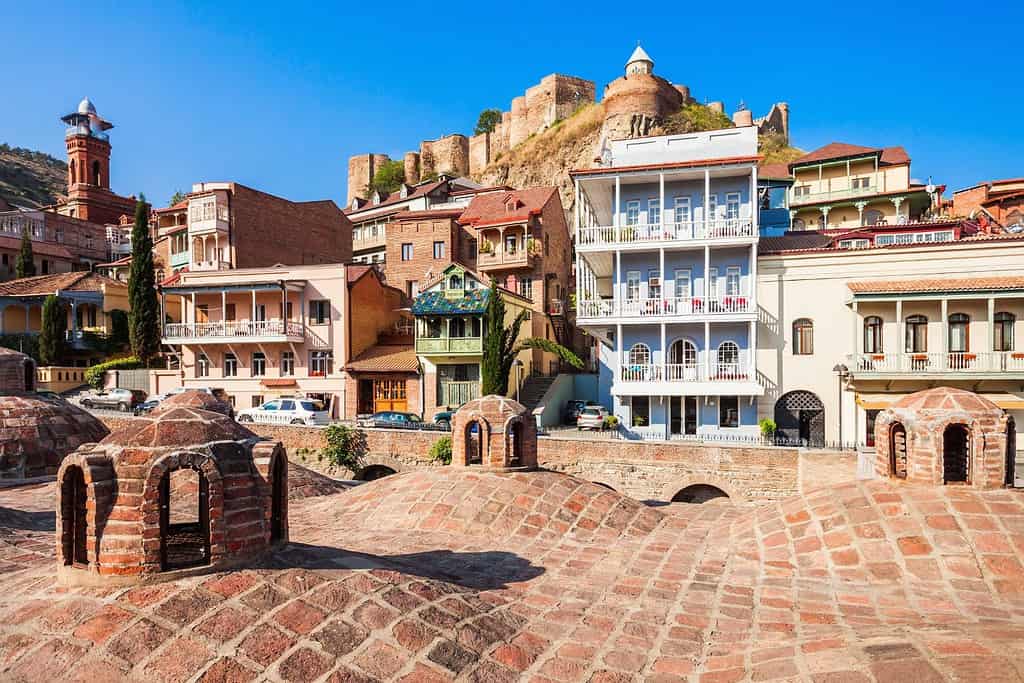Table of Contents
The geography of Georgia is a captivating blend of diverse landscapes and historical significance. Situated at the crossroads of Eastern Europe and Western Asia, this nation’s geographic location has played a pivotal role in shaping its history and cultural identity.
Nestled between the Black Sea and the Caucasus Mountains, Georgia geography beckons adventurous travelers with its lush valleys, towering mountain peaks, and ancient historical sites. From exploring the majestic Ushba Mountain to uncovering the cultural tapestry of Tbilisi, Georgia’s diverse landscapes and rich history offer an unforgettable journey for intrepid tourists seeking a unique and enriching experience.
The physical geography of Georgia paints a picture of awe-inspiring natural masterpieces. From the breathtaking vistas of the Svetitskhoveli Cathedral, a UNESCO World Heritage site, to the diverse ecosystems that dot the country, Georgia stands as a testament to nature’s grandeur.



Top Geographic Features of Georgia (U.S. state)
- Blue Ridge Mountains: Part of the larger Appalachian Mountains, the Blue Ridge Mountains stretch into the northern part of Georgia, influencing its topography and climate.
- Chattahoochee River: One of Georgia’s major rivers, the Chattahoochee River flows from the Blue Ridge Mountains through Atlanta, providing essential water resources for communities and industries.
- Okefenokee Swamp: Located in the southeastern part of Georgia, this vast wetland is one of the largest intact freshwater ecosystems in the U.S.
- Cumberland Island: This barrier island off the coast of Georgia is known for its pristine beaches, maritime forests, and wild horses.
- Stone Mountain: A prominent granite dome located near Atlanta, Stone Mountain is famous for its massive bas-relief carving of Confederate leaders and its recreational park.
- Appalachian Plateau: Located in the northwestern corner of Georgia, this plateau is characterized by its rugged terrain and rich coal deposits.
- Savannah River: Forming much of the border between Georgia and South Carolina, the Savannah River is vital for transportation, industry, and recreation.
- Providence Canyon: Often referred to as “Georgia’s Little Grand Canyon,” this state park showcases the colorful soils and erosion patterns of the region.
- Barrier Islands: Georgia’s coastline is dotted with a series of barrier islands, each with its unique ecosystems and histories, including Jekyll Island and Tybee Island.
- Fall Line: A geological boundary that runs through Georgia, separating the Piedmont and Coastal Plain regions. It’s characterized by waterfalls and rapids where rivers descend from higher elevations.
These geographic features play a crucial role in shaping Georgia’s landscape, climate, and cultural history, making them essential elements in defining the state’s geography.
Georgia Geography

Exploring the Georgia National Geographic canvas reveals a captivating array of geographic features. From the majestic Appalachian Mountains to verdant forests and fertile plains, the state offers a breathtaking tapestry of natural wonders.
- Mountain Ranges – The Crown of Diversity: Similar to documentaries that often feature impressive mountain ranges, Georgia is home to the southern tip of the Appalachian Mountains. These scenic peaks not only enhance the state’s natural beauty but also offer unique biodiversity and have shaped its cultural identity.
- Lakes – A Kaleidoscope of Colors: Georgia’s Lake Lanier and Lake Oconee, with their shimmering waters, resemble the picturesque landscapes captured in photographs. These pristine lakes, surrounded by forests, reflect the region’s geological richness.
- Forests – Lush Canopies of Green: Just as forest features highlight dense tree canopies, Georgia’s Chattahoochee National Forest showcases a diverse range of flora and fauna. This verdant region tells stories of nature’s abundance and the state’s commitment to conservation.
- Historical Sites – Unveiling the Past: Georgia’s historical sites, like the Savannah Historic District, evoke memories of explorations that uncover the nation’s early history. The antebellum architecture and cobblestone streets stand as a testament to the state’s rich colonial and Civil War heritage.
- Ethnic Diversity – A Cultural Melting Pot: Similar to the National Geographic focus on diverse cultures, Georgia is a tapestry of ethnic groups, including Caucasians, African Americans, Hispanics, and Asians. Each group contributes unique traditions, languages, and customs, creating a vibrant cultural mosaic.
- Wildlife – A Sanctuary for Nature: Georgia’s protected areas, such as the Okefenokee Swamp, mirror the coverage of wildlife conservation. These regions serve as crucial habitats for a variety of species, preserving biodiversity in a diverse environment.
- Geological Marvels – A Natural Showcase: The state’s geological wonders, like the Providence Canyon, showcase Georgia’s natural erosion processes and the beauty of its red clay. Such structures demonstrate nature’s artistry over time.
- Remote Exploration – Uncharted Territories: The remote and pristine Cumberland Island beckons adventurers, much like quests into uncharted territories. This barrier island offers a glimpse into untouched landscapes and historical landmarks.
Georgia geographic features are marked by the dominating presence of the Appalachian Mountains. These majestic peaks create a stunning backdrop for the state’s diverse topography. The historic Chattahoochee River, vital for trade and transportation, winds its way through these mountains and plains, connecting various parts of the state.
Flowing gracefully through the Georgian terrain are the life-giving rivers of the Savannah and the Altamaha, vital for agriculture and irrigation. Additionally, the coastal plains and marshlands add to the state’s unique geography.
Georgia Geographic Location

Georgia geographic location is very strategic, and its position has played a significant role throughout history. Located at the crossroads of Eastern Europe and Western Asia, Georgia has been a conduit for the exchange of goods, ideas, and cultures, emphasizing its historical significance.
Borders of Georgia
Georgia shares borders with four countries. Here is Georgia physical geography with the neighboring countries and the approximate total length of each border:
- Russia: The border between Georgia and Russia is approximately 894 kilometers long.
- Turkey: The border between Georgia and Turkey is approximately 252 kilometers long.
- Armenia: The border between Georgia and Armenia is approximately 219 kilometers long.
- Azerbaijan: The border between Georgia and Azerbaijan is approximately 428 kilometers long.

| Georgia Neighboring Country | Border Length (Approximate) |
|---|---|
| Russia | 894 kilometers |
| Turkey | 252 kilometers |
| Armenia | 219 kilometers |
| Azerbaijan | 428 kilometers |
These international borders define Georgia’s connections to different regions and contribute to the country’s geopolitical significance as a crossroads between Eastern Europe and Western Asia.
Geography of Tbilisi Georgia

As the capital city of Georgia, Tbilisi is a fascinating microcosm of the country’s human geography. Here, various ethnic groups, including Georgians, Armenians, Russians, and Azerbaijanis, coexist, contributing to the city’s vibrant cultural tapestry.
Tbilisi, the capital city of Georgia
- City of Contrasts: Tbilisi is known for its stark contrasts, where modern developments coexist with traditional neighborhoods, creating a unique blend of old and new.
- Mtkvari River: The Mtkvari River flows through the city, providing water for various purposes and contributing to the city’s scenic beauty.
- Tbilisi’s Elevation: The city is located at an elevation, of approximately 380-770 meters (1,247-2,526 feet) above sea level, nestled between the ridges that run up to the Greater Caucasus mountains.
- Green Spaces: Tbilisi is home to several beautiful gardens and parks, including the National Botanical Garden of Georgia, offering a serene escape amidst the bustling city.
- Tbilisi’s Historical Significance: With a history dating back over 1,500 years, Tbilisi has witnessed various civilizations and played a pivotal role in ancient trade routes.
- Diverse Architecture: The city showcases a diverse architectural heritage, reflecting influences from Persian, Russian, and modern styles.
- Picturesque Landscape: Tbilisi’s landscape is adorned with rolling hills, ancient fortresses, and the Narikala Fortress, which overlooks the city and offers panoramic views.
- Tbilisi’s Economy: The city serves as Georgia’s economic and cultural center, attracting people from all over the country seeking opportunities and education.


Historical Geographical Importance of Georgia
Throughout the ages, Georgia’s geographical significance has made it a sought-after stage for historical drama. As empires rose and fell, from the Persians to the Mongols and the Ottomans, Georgia’s geographic position played a pivotal role in shaping the world’s history.
- Strategic Crossroads: georgia geographic location at the crossroads of Eastern Europe and Western Asia has made it a strategic point for trade, cultural exchange, and military conquests throughout history.
- Ancient Trade Routes: The ancient Silk Road and other trade routes passed through Georgia, connecting the East and West, and facilitating the exchange of goods, ideas, and cultures.
- Kingdoms and Dynasties: Georgia has seen the rise and fall of several kingdoms and dynasties, such as the Kingdom of Colchis and the Bagrationi dynasty, which have left their mark on the region’s history.
- Ottoman and Persian Dominance: During various periods, Georgia found itself caught between the Ottoman and Persian empires, leading to significant cultural and political influences from both sides.
- Christianity’s Influence: Georgia was one of the first countries to adopt Christianity as its state religion in the 4th century, and its unique brand of Orthodox Christianity has deeply influenced its culture and architecture.
- Golden Age of Georgia: The 12th and early 13th centuries are often referred to as the Georgian Golden Age, a period of political strength, cultural development, and the flourishing of arts and sciences.
- Mongol Invasions: The Mongol invasions in the 13th century had a profound impact on Georgia’s history, leading to a period of domination and cultural exchange.
- Russian Annexation: In the 19th century, Georgia was annexed by the Russian Empire, bringing about significant political, cultural, and social changes.
- The Great Caucasus Mountains: The majestic Caucasus Mountains in Georgia have not only been a natural barrier but also a source of inspiration for many legends, tales, and artistic expressions.
- Influence of Neighboring Cultures: Due to its strategic location, Georgia has been influenced by various neighboring cultures, including Persian, Ottoman, and Russian, which have enriched its own unique cultural tapestry.
The geographical position of Georgia is a blend of natural beauty and historical importance. With its breathtaking landscapes, ancient trade routes, and rich cultural heritage, this nation continues to enchant the world. Despite challenges, Georgia remains a compelling destination for the intrepid traveler and curious explorer, drawn to its mix of nature’s wonders and historical intrigue.
In conclusion, Georgia’s geographical significance has made it a stage for historical drama, with various empires and civilizations vying for control and leaving their mark on the region’s history. Its strategic position has shaped the world’s historical events and continues to play a pivotal role in the geopolitics of the region today.
More About Georgia
[the-post-grid id=”50359″ title=”Georgia Main page”]
